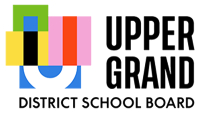GUELPH, ON – The Upper Grand District School Board has launched the Student Mental Health and Well-Being Strategy – Strategic Framework 2023-2026. This framework looks at the Foundations and Guiding Principles and establishes key Priority Areas.
The Principles and Foundations guide the development, implementation, and monitoring of the UGDSB mental health and well-being strategy. They include:
Foundations:
Relationships are Foundational
– Relationships are foundational to every aspect of the strategy. They are the vital context through which the strategy will be experienced by every student.
Every Student
– Mental health is relevant to Every Student within the school community as represented at the centre of the model. Students are individuals who require resources and support informed by their identity and context.
Whole Community Connections
– Relationships at home and within the broader community are deeply important to student mental health and well-being. Whole Community Connections means working closely with families and community partners to successfully meet the mental health and well-being needs of every student.
Guiding Principles:
Recognize
– colonial systems and structures that provide uneven access to, and outcomes for, mental health and well-being supports. Acknowledge and amend for the immense harms experienced by Indigenous peoples from mental health systems.
Engage
– with community leaders and groups to learn more about available and needed identify-specific mental health and well-being supports.
Amplify
– perspectives of young people and communities who are racialized and marginalized to co-develop mental health and well-being supports.
Respond
– to student mental health and well-being needs with differentiated and identify-specific approaches.
Priority Areas:
Whole student well-being promotion
– This priority area underscores the vital role of well-being for creating conditions for every student to develop and thrive. It is based on the belief that well-being promotion is most impactful when it considers the whole student (e.g., body, mind, emotion, and spirit) and is embedded intentionally across student’s school experiences and connections with families and larger communities.
Indigenous well-being
– This priority area emphasizes limiting further harm in the context of school mental health by centering contributions from Indigenous communities and emphasizing the co-development of strengths-based, holistic, and identity-specific approaches to supporting Indigenous students’ mental health and well-being. This area of focus is integral for Indigenous students’ well-being and can also contribute greatly to the well-being of the entire school community.
Student engagement and leadership
– This priority area emphasizes supporting student agency at every tier of support, from creating opportunities for student leadership within school-wide well-being initiatives to ensuring students who are receiving mental health support have a voice in their care. This is grounded in the beliefs that students have much to offer in the striving for mentally healthier schools and that greater student agency will also fuel their well-being.
Mental health intervention and pathways
– This priority area captures processes to respond to mental health/substance use challenges, from early intervention, short-term treatment, and development of pathways to community for intensive mental health/ substance use support. This priority area emphasizes the continuing development of responsive mental health services which are timely, matched to the student’s level of need, and personalized to the student’s context and identities.
Inclusive and identity informed approaches
– This priority area emphasizes continuing to build inclusive mental health services in which every student can access differentiated and identity-informed mental health care. Pursuit of this priority area will be informed by relevant community partners as well as ongoing learning for students, staff and administration in identify-informed mental health and well-being supports.
Early identification and skill building
– This priority area emphasizes building mental health literacy for school staff and students so that every member of the school community can recognize mental health and substance use challenges. In addition, students and staff receive the training and skills to respond to mental health challenges in themselves and others to an extent that is appropriate for their role within the school.
To learn more about the Student Mental Health & Well-being Strategy please click here.
